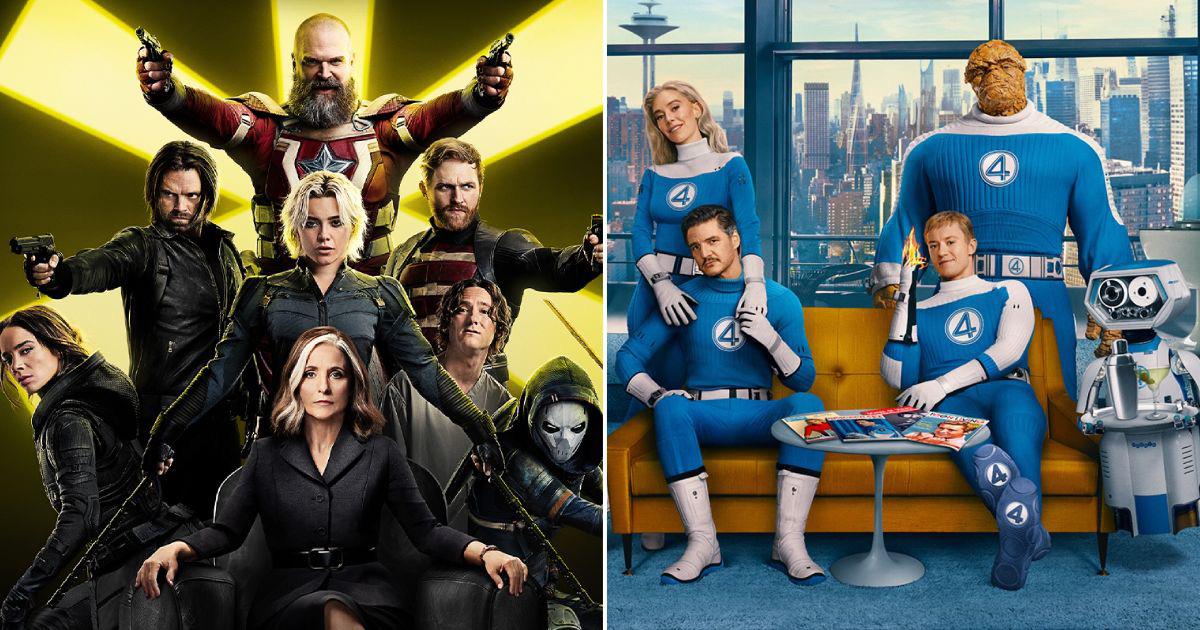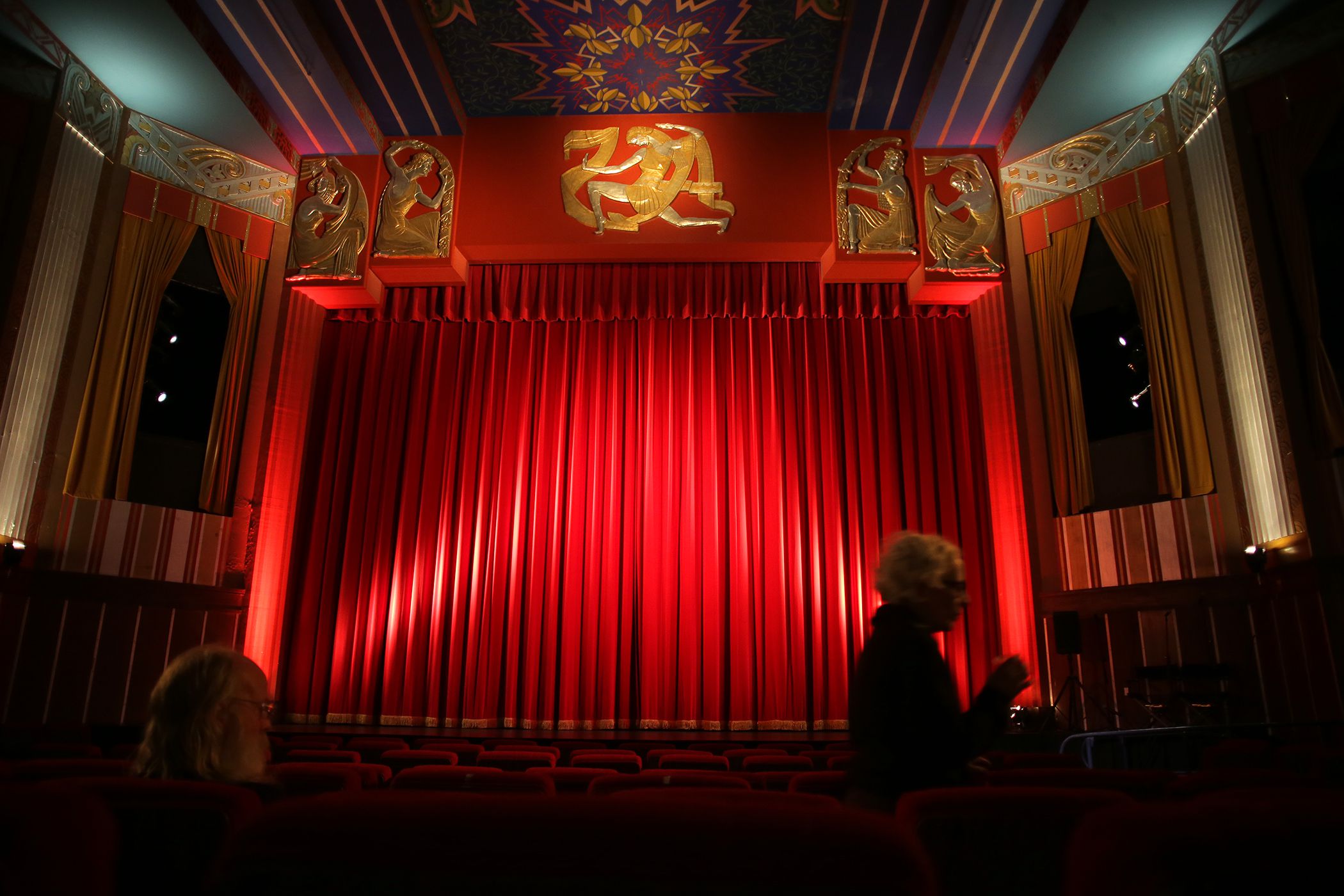For nearly two decades, the landscape of mainstream cinema has been dominated by a single, powerful force: the superhero. The Marvel Cinematic Universe (MCU) and its counterparts have rewritten the rules of blockbuster filmmaking, creating an interconnected tapestry of stories that has generated unprecedented box office revenue and cultural saturation. Yet, in recent years, a palpable shift has begun. The once-reliable chorus of cheers on opening night is now punctuated by a growing murmur of discontent. Terms like “superhero fatigue” have evolved from niche critic buzzwords to mainstream conversation starters. Concurrently, original, auteur-driven films are capturing the public’s imagination and achieving remarkable commercial success. This confluence of trends begs a critical question: Is mainstream cinema finally at a turning point, poised to move beyond the era of the superhero and embrace a new age of original storytelling?
To answer this, we must look beyond the simplistic narrative of “comic book movies bad, original movies good.” The reality is far more nuanced, involving evolving audience appetites, the transformative impact of streaming, the economic recalibrations of Hollywood, and a deep-seated human craving for novelty within our most beloved cultural rituals.
The Age of the Superhero: An Unprecedented Reign
To understand the potential turning point, we must first appreciate the scale of the superhero’s dominion. The modern era was truly ignited in 2008 with the one-two punch of Marvel’s Iron Man and Christopher Nolan’s The Dark Knight. The former proved that a shared universe was not only possible but immensely profitable, while the latter demonstrated that the genre could be a vessel for profound, cinematic art.
The MCU’s masterstroke was its serialized nature. It wasn’t just selling movies; it was selling a habit. Audiences were trained to show up for each installment, not merely for a self-contained story, but for essential pieces of a larger, unfolding narrative. The payoff in The Avengers (2012) was a cinematic event unlike any other, validating a decade-long business model and setting a new template for the industry. The box office numbers became astronomical, with films like Avengers: Endgame (2019) soaring to become the highest-grossing film of all time for a period, a testament to a perfectly executed long-term strategy.
This model offered a powerful sense of community and shared cultural experience. The post-credit scenes, the fan theories, the deep dives into comic book lore—it all created a vibrant, participatory culture. For studios, it was a risk-averse paradise. Why gamble on an unknown original property when you could greenlight a film based on a character with 60 years of built-in brand recognition?
The Cracks in the Armor: Deconstructing Superhero Fatigue
The term “superhero fatigue” is often dismissed as oversimplification, but it accurately describes a complex, multi-faceted phenomenon that has been building for years. It’s not necessarily that audiences are tired of superheroes en masse, but rather that they are growing weary of the formula that has come to define them.
1. The Formulaic Narrative and Stakes Inflation:
Many recent superhero films have fallen into a predictable pattern: a charismatic hero, a underdeveloped villain with a similar powerset, a MacGuffin to chase, and a third-act CGI battle that levels a city (or a universe). This “Marvel Formula,” once a guarantee of a fun time at the movies, has begun to feel repetitive. The stakes are constantly being raised—from saving a city to saving the universe to saving the multiverse—to the point where they become abstract and meaningless. When everything is at stake, nothing truly feels at stake. The emotional connection, which was always the core of the best genre films, gets lost in a blur of digital noise.
2. The Content Glut and the Dilution of “Event” Status:
The advent of the streaming wars intensified this issue. What was once a carefully curated schedule of two or three films per year has exploded into a relentless churn of content. The MCU and DC Extended Universe (DCEU) now include numerous Disney+ and Max series, all ostensibly required viewing to understand the latest cinematic chapter. For the average viewer, the commitment has become a part-time job. The specialness of a superhero movie as an “event” has been diluted by its own ubiquity. When a new superhero project drops every few weeks, it’s no longer a destination; it’s just another item on the content conveyor belt.
3. Qualitative Missteps and Erosion of Trust:
A series of critical and commercial disappointments has accelerated the fatigue. Films like Ant-Man and the Wasp: Quantumania (2023) and The Marvels (2023) were panned for their underwhelming stories and over-reliance on poor-quality CGI, while the DCEU’s inconsistent tone and narrative chaos culminated in a series of box office failures. Each misstep chips away at the audience’s trust. Moviegoers who once bought tickets opening weekend based on the logo alone are now waiting for reviews and word-of-mouth.
4. The Cultural Pendulum Swings:
Cultural tastes are cyclical. The superhero genre, for so long the embodiment of the cultural zeitgeist, is now facing a backlash simply by virtue of its prolonged dominance. A new generation of filmgoers, who grew up with the MCU as a constant, is now seeking something different, something that feels fresh, auteur-driven, and perhaps more grounded. The same way the western genre eventually ceded its box office throne, the superhero genre is experiencing a natural and inevitable cultural correction.
The Counter-Revolution: The Resurgence of Original Storytelling
While the superhero genre shows signs of strain, a powerful counter-movement has been gathering force. This isn’t merely about “non-superhero” films; it’s about original, audacious, and director-driven projects that are capturing the public’s attention and, crucially, making money.
The “Barbenheimer” Phenomenon: A Cultural Watershed
The simultaneous release of Greta Gerwig’s Barbie and Christopher Nolan’s Oppenheimer in July 2023 was not just a box office story; it was a cultural earthquake. On one side was Barbie, a satirical, deeply intelligent, and visually dazzling exploration of feminism and patriarchy, built on a globally recognized toy brand but executed with a wildly original and auteurist vision. On the other was Oppenheimer, a three-hour, R-rated, dialogue-heavy biographical drama about the father of the atomic bomb, shot largely in claustrophobic rooms and courtrooms.
Conventional Hollywood wisdom would have predicted one, or both, to underperform. Instead, they created a synergistic cultural moment. “Barbenheimer” became a meme, a double-feature challenge, and a global talking point. Together, they grossed nearly $2.4 billion worldwide, proving several radical truths:
- Audiences Crave Novelty: They yearn for unique, event-level experiences that break from the standard franchise formula.
- Auteur Vision Sells: The names Greta Gerwig and Christopher Nolan were not just credits; they were brands that promised a distinct, uncompromised vision.
- Theatrical Experience is for Events: People will leave their homes for films that feel like communal events, films that demand to be seen on the biggest screen and discussed immediately after.
Other Harbingers of Change:
The success of “Barbenheimer” was the exclamation point, but the sentence was already being written.
- Everything Everywhere All At Once (2022): This independent, genre-bending film from the Daniels (Daniel Kwan and Daniel Scheinert) became A24’s highest-grossing film ever and swept the Academy Awards, winning Best Picture. Its triumph was a testament to the hunger for wildly creative, emotionally resonant stories that defy easy categorization.
- Past Lives (2023): Celine Song’s quiet, heartbreaking, and critically adored film about love, destiny, and cultural identity became a sleeper hit, demonstrating that there is a significant audience for subtle, character-driven dramas.
- The Fall Guy (2024): While an adaptation of a TV show, this film was sold explicitly as a love letter to original, practical-action filmmaking and the unsung heroes of cinema. Its marketing and critical reception positioned it as the antithesis of a CGI-heavy superhero flick, championing real stunts and original star power (Ryan Gosling, Emily Blunt).
These films, and others like them, share a common thread: they are unmistakably the product of a singular creative voice. They offer what the franchise model often sandblasts away: creative risk, tonal specificity, and a satisfying, self-contained narrative.
The Driving Forces Behind the Shift
The move away from superhero saturation and towards original stories is not happening in a vacuum. It is being propelled by several powerful, interconnected forces.
1. The Streaming Paradox:
Streaming platforms, while initially seen as a threat to cinema, are now playing a complex role. They have created a voracious appetite for content, but they have also become a graveyard for mid-budget films that would have thrived in the 1990s and 2000s. However, this has created a new opportunity. In a landscape cluttered with content, true originality stands out. A film like Everything Everywhere All At Once or a series like The Bear cuts through the noise precisely because it doesn’t feel like algorithmically generated content. Furthermore, streamers like Netflix and Apple TV+ are now leveraging their vast resources to bank on auteur-driven projects for both critical prestige and audience acquisition, as seen with Apple’s Killers of the Flower Moon and Netflix’s Roma.
2. The Economic Recalibration:
The economics of the blockbuster are becoming unsustainable. The “spend more to make more” model has led to ballooning budgets where a superhero film needs to gross $800 million to $1 billion just to break even. This is an incredibly high-stakes gamble, as demonstrated by the massive losses on films like The Flash (2023) and Indiana Jones and the Dial of Destiny (2023). In contrast, a film like Barbie, with a $145 million budget, or Oppenheimer, with a $100 million budget, represents a more manageable financial risk with a potentially enormous payoff. Studios are being forced to reconsider their strategy, looking for “smart” blockbusters—films with moderate (by today’s standards) budgets and high creative potential, rather than blank checks for visual effects houses.
3. The Yearning for Theatrical “Event-ization”:
After the pandemic-induced hibernation, audiences are being more selective about what merits a trip to the cinema. They are choosing experiences that feel “unmissable” on the big screen. A formulaic sequel or a visually murky CGI-fest can easily be waited for on streaming. But a visually stunning spectacle like Dune: Part Two or a culturally resonant phenomenon like Barbie demands the theatrical experience. This is forcing studios to think harder about what, exactly, makes a film a “must-see” in theaters, privileging directorial vision and spectacular craft over mere brand recognition.
Read more: The Comeback Kid: How Robert Downey Jr. Reclaimed His Hollywood Throne
The Road Ahead: A New Ecosystem, Not a Replacement
So, is this the end of the superhero? Absolutely not. To declare the genre dead would be as foolish as declaring it immortal. The future is not a binary choice between superheroes and original stories. Instead, we are likely entering a new, more balanced cinematic ecosystem.
The superhero genre must, and will, evolve. We are already seeing signs of this. Projects like Joker: Folie à Deux and the rebooted Batman franchise under Matt Reeves are leaning into darker, more character-driven, and auteurist approaches. The critical and commercial success of Spider-Man: Across the Spider-Verse proved that within the genre, there is still immense room for visual and narrative innovation. The path forward for superhero films is not to disappear, but to de-scale, to focus on stronger stories, more distinct directorial voices, and a reduction in volume to restore a sense of specialness.
For original films, the challenge will be to build on the momentum. The success of “Barbenheimer” must be seen not as a fluke, but as a blueprint. Studios need to reinvest in mid-budget films for adults, to market them with the same verve as their tentpoles, and to trust filmmakers with unique visions. The role of the movie star is also being reasserted; the draw of Margot Robbie, Ryan Gosling, Cillian Murphy, and Leonardo DiCaprio remains a powerful economic engine.
Conclusion: A Welcome Inflection Point
Mainstream cinema is indeed at a turning point, but it is a point of correction and rebalancing, not apocalypse. The age of the superhero’s unquestioned dominance is over. The audience has spoken, not with a rejection of spectacle, but with a demand for better, more varied, and more human stories.
The fatigue was never really with men and women in capes; it was with formula, with saturation, with the diminishing returns of a corporate-mandated universe. The resurgent success of original storytelling is a powerful reminder of cinema’s fundamental magic: the ability to surprise us, to move us in ways we didn’t expect, and to show us something we’ve never seen before.
The movie theater of the future will hopefully be a more diverse and exciting place. One weekend, you might travel to a new galaxy with a visionary director. The next, you might witness the profound intimacy of a past love rekindled. And, on occasion, you might still thrill to the sight of a hero swinging between skyscrapers—but that hero will have to work harder, and be part of a better story, to earn your applause. This is not a death knell for cinema; it is a renaissance, a return to the creative vitality that has always been its lifeblood. The kryptonite for superhero fatigue, it turns out, was simply great storytelling all along.
Read more: Hollywood’s New Power Players: The Producers and Directors Defining the Next Decade
FAQ Section
Q1: What exactly is “superhero fatigue”?
A: Superhero fatigue is a term used to describe a growing audience weariness with the superhero genre. It’s not necessarily a dislike of superheroes themselves, but rather a exhaustion with the repetitive, formulaic nature of many of these films, their overwhelming volume (across both film and streaming), and a sense that the stakes have become so inflated they no longer carry emotional weight. It manifests as declining box office returns for mediocre entries and a more hesitant audience that waits for reviews instead of automatic opening-night attendance.
Q2: Didn’t Spider-Man: No Way Home and Avatar: The Way of Water prove that audiences still want big franchises?
A: Absolutely. The success of those films underscores a crucial nuance: audiences haven’t rejected big-budget franchises or spectacle. They have rejected mediocrity and repetitiveness. Both No Way Home and Avatar 2 were perceived as high-quality, event-level experiences that offered something new and emotionally engaging. No Way Home leveraged decades of nostalgia with expert fan service, while Avatar 2 offered a groundbreaking visual experience that was literally years in the making. The bar for franchise filmmaking has simply been raised.
Q3: Is this shift good for the film industry?
A: Most analysts and industry insiders would argue that it is a very healthy development. The over-reliance on a single genre was a long-term economic and creative risk. A more balanced ecosystem, where original, mid-budget films can thrive alongside (and sometimes out-gross) franchise tentpoles, creates a more resilient industry. It encourages studios to take calculated creative risks, empowers a wider range of filmmakers and stories, and ultimately offers audiences a more diverse and satisfying menu of cinematic options.
Q4: What role does streaming play in all of this?
A: Streaming is a double-edged sword. On one hand, the constant demand for content for streaming platforms has contributed to franchise saturation and diluted the value of individual films. On the other hand, streamers have become vital financiers for prestigious, auteur-driven projects that major studios had largely abandoned. Furthermore, the “content glut” on streaming makes truly original work stand out more, and the theatrical experience has reasserted itself as the place for culturally shared “events” that you can’t get at home.
Q5: As a moviegoer, what can I do to support this trend?
A: The most powerful tool you have is your wallet. Vote with your ticket. Make a point to see original films in their opening weekends in theaters, as strong opening numbers send the clearest signal to studios. Support films from directors you admire. Engage in conversations about the films you love, both online and in person. When a franchise film disappoints you, be vocal about why—was it the weak story, the bad CGI, the formulaic plot? Constructive criticism helps the industry understand audience preferences beyond simple box office metrics.
Q6: Will we ever see a complete return to the pre-superhero era of cinema?
A: It’s highly unlikely. The globalized, franchise-driven model is too deeply embedded in the modern studio system to vanish entirely. However, the most likely future is a synthesis. We are moving towards a model that resembles the 1970s “New Hollywood” or the 1990s golden age of indie filmmaking, but on a larger scale—where director-driven passion projects (Oppenheimer, Killers of the Flower Moon) can be made with blockbuster-level budgets and marketing, coexisting alongside (and hopefully influencing) more intelligently crafted franchise films. The goal is not to erase the past two decades, but to learn from them and build a more varied and sustainable future for the art form.




